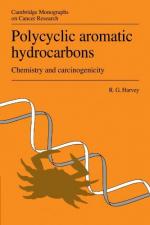|
This section contains 282 words (approx. 1 page at 300 words per page) |
Aromatic hydrocarbons contain one or more carbon rings. They are typified by benzene, which contains six carbon atoms and three double bonds. Derived chiefly from petroleum and coal tar, aromatic hydrocarbons tend to be reactive. The designation aromatic comes from the strong and no t unpleasant odor produced by these molecules.
Benzene was first identified in compressed oil gas by Michael Faraday in 1825. Although benzoin and benzoic acid had been called aromatics before 1820, it was not until the 1850s that benzene and its derivatives were placed in the chemical family of aromatics. The so-called aromatic spices and resins such as frankincense, camphor, turpentine, were shown in the 1880s not to be chemically similar to benzene, but rather to be derivatives of a family of ten-carbon compounds, called terpenes. Nevertheless, use of the term aromatic has persisted to this day as a descriptor of these fragrant, but chemically non-aromatic, substances.
In 1925, Robert Robinson attributed the properties of benzene and its analogs to the six extra electrons that produce the stable association responsible for the aromatic character. In 1931, Erich Huckel showed that benzene's stability arose from six sigma bonds in the plane of the ring, and six pi electrons in orbits at right angles above and below the plane. The pi orbitals give rise to benzene's diamagnetism.
Benzene has traditionally been written as a six-membered ring with alternating single and double bonds. But this representation suggests that the carbon-carbon bonds (alternating double and single bonds) should be of unequal lengths, whereas in fact they are all the same length. This is explained by resonance theory, according to which the bonds should share the characteristics of both double and single bonds.
|
This section contains 282 words (approx. 1 page at 300 words per page) |


